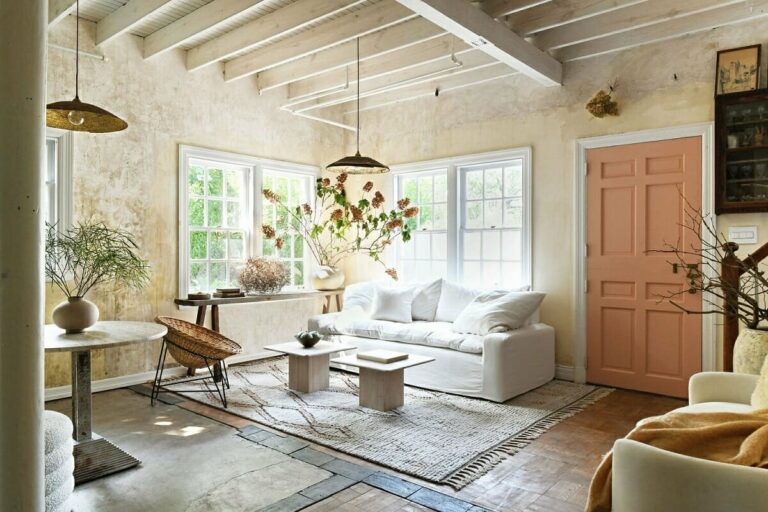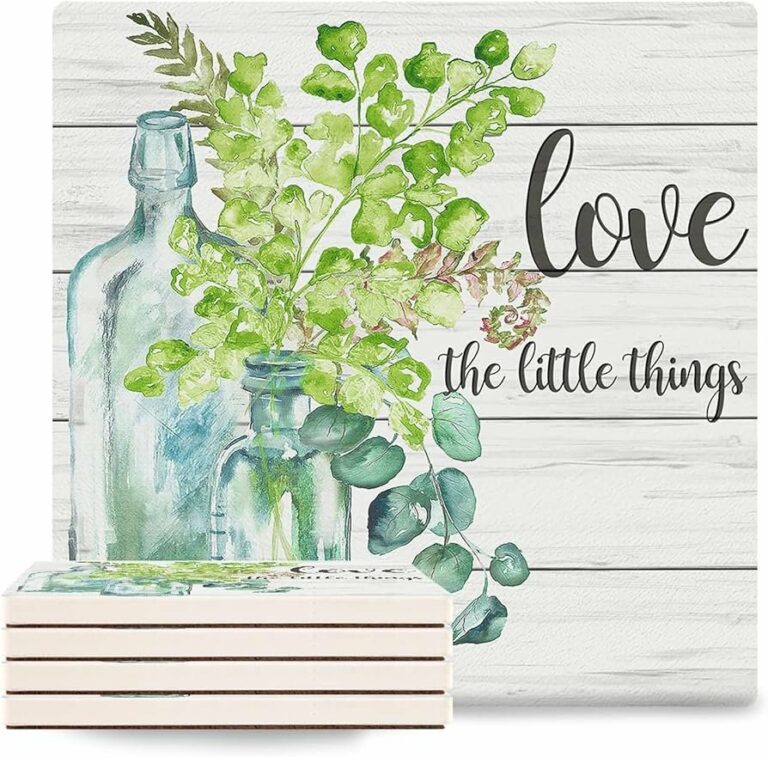Exploring Eco-Friendly Furniture Paint Finishes
Today we discuss Eco-Friendly Furniture Paint Finishes. Are you searching for environmentally friendly options to replace traditional furniture paint finishes? You’re in for a treat! This article will delve into various creative solutions that not only improve the look of your furniture but also support your eco-friendly values.
From natural oils and waxes to milk paint and recycled paint, there are numerous choices to rejuvenate your furniture while reducing your environmental footprint. If you’re eager to give your furniture a sustainable makeover, let’s explore the realm of eco-friendly alternatives together!
Eco-Friendly Furniture Paint Finishes:
Whether you’re a DIY enthusiast or a professional, opting for eco-friendly paint finishes is a great way to reduce environmental impact while still achieving beautiful and durable results. Unlike traditional finishes, eco-friendly alternatives are safer for your health and the environment. This article presents various green options for your furniture projects.
Milk Paint:
Milk paint is a natural, non-toxic option for achieving a vintage or country-style look on furniture. It is composed of milk protein, lime, clay, and natural pigments, providing a matte finish that can be distressed for a rustic appearance. This eco-friendly paint is biodegradable and easy to dispose of safely.
The Benefits of Milk Paint:
- Non-toxic and safe for indoor use
- Can be easily mixed with water
- Great for achieving an antique or distressed look
- Biodegradable and environmentally friendly
Chalk Paint:
Chalk paint is a trendy alternative to regular paint. It contains calcium carbonate, talc, and pigment, giving it a soft, chalky finish. This type of paint sticks well to different surfaces like wood, metal, and fabric with little preparation. It can be distressed for a shabby chic style and provides a velvety texture.
The Benefits of Chalk Paint:
- No need for priming or extensive surface preparation
- Can be used on various surfaces
- Produces a soft, matte finish
- Can be easily distressed for a vintage look
Natural Oil Finishes:
Natural oil finishes like tung oil or linseed oil are great substitutes for regular paint finishes. They soak into the wood, creating a protective layer that brings out the wood’s natural beauty. These finishes are chemical-free, giving furniture a warm and natural look. Additionally, they are simple to repair or refresh.
The Benefits of Natural Oil Finishes:
- Enhances the natural beauty of the wood
- Provides a protective layer
- Easy to repair or rejuvenate
- Non-toxic and environmentally friendly
Water-Based Paints:
Water-based paints have evolved and become a popular choice for environmentally conscious individuals due to their low VOC content, wide color selection, versatility on different surfaces, easy cleanup, and safety benefits for users and the environment.
The Benefits of Water-Based Paints:
- Low VOC content, reducing toxic fumes
- Wide range of colors and finishes available
- Can be used on multiple surfaces
- Easy to clean up with water
Natural Dye Stains:
For those looking to maintain the wood’s natural color, as well as protect and enrich its appearance, natural dye stains are a great option. Derived from sources such as plants, fruits, and minerals, these stains offer a gentle and see-through hue that highlights the wood’s grain. They are environmentally friendly, non-toxic, and simple to apply using a brush or cloth.
The Benefits of Natural Dye Stains:
- Allows the wood grain to show through
- Derived from natural sources
- Non-toxic and environmentally friendly
- Easy application with brush or cloth
Plant-Based Paints:
Plant-based paints, or bio-based paints, are created from renewable sources like plant oils, resins, and waxes. They are eco-friendly, devoid of harmful chemicals, provide great coverage and a lovely finish. These paints come in various colors and are suitable for different surfaces like wood, metal, and plaster.
The Benefits of Plant-Based Paints:
- Renewable and sustainable
- Low VOC content
- Excellent coverage and durability
- Wide range of colors available
Natural Wax Finishes:
Natural wax finishes, like beeswax or carnauba wax, offer both protection and decoration. They enhance the wood’s beauty, provide a soft shine, and protect against scratches and moisture. Easy to apply by hand, these finishes can be buffed for the desired level of shine.
The Benefits of Natural Wax Finishes:
- Enhances the wood’s natural beauty
- Provides additional protection against scratches and moisture
- Easy to apply and buff
- Can achieve a desired level of shine
Lacquer Finishes:
Eco-friendly lacquer finishes provide a safe alternative to traditional lacquers, offering a glossy appearance without harmful chemicals. They are water-based, low in VOCs, durable, and resistant to scratches and stains. They can be applied using a brush or spray gun on different surfaces.
The Benefits of Eco-Friendly Lacquers:
- Water-based and low VOC content
- High-gloss finish with excellent durability
- Resistant to scratches and stains
- Can be applied with a brush or spray gun
Shellac:
Shellac is a natural resin derived from the lac bug’s secretions, used as a versatile and beautiful traditional finish. It comes in different shades, from blonde to dark amber, and can be applied transparent or tinted for color. Shellac adds a protective layer, improving the wood’s look and allowing easy repairs.
The Benefits of Shellac:
- Enhances the wood’s appearance with a protective layer
- Available in various shades
- Can be repaired easily if damaged
- Renewable and sustainable
DIY Natural Finishes:
To experiment with DIY finishes, you can use natural ingredients like coffee, tea, or vinegar for wood stain. Homemade varnishes can be made with boiled linseed oil, beeswax, and citrus solvents. These natural options offer customization of color, sheen, and ingredients for full control over the outcome.
The Benefits of DIY Natural Finishes:
- Allows for customization of color and sheen
- Control over ingredients used
- Opportunity for creative experimentation
- Can achieve unique and personalized results
Faqs for Eco-Friendly Furniture Paint Finishes:
Yes, milk paint is a popular eco-friendly option for furniture finishes. It is made from natural ingredients like milk protein, lime, and earth pigments. Milk paint creates a rustic, matte finish and is known for its durability and non-toxic nature.
Absolutely! Water-based paints are an excellent eco-friendly alternative to traditional solvent-based paints. They have lower VOC (volatile organic compound) content, are easy to clean up, and emit fewer harmful fumes. Additionally, water-based paints come in a wide range of colors and finishes.
Chalk paint is considered an eco-friendly choice for furniture finishes. It is made from water, calcium carbonate, and pigments, and it has low VOC content. Chalk paint provides a charming matte finish and can be easily distressed for a vintage look.
Absolutely! Natural oils like linseed or tung oil are eco-friendly alternatives to traditional paint finishes. They penetrate the wood, enhancing its natural beauty while providing protection. These oils are low in VOCs and are known for their durability and water-resistant properties.
Yes, natural waxes, such as beeswax or carnauba wax, are eco-friendly alternatives to traditional paint finishes. They are often used as a topcoat over other paint or stain treatments to add depth and protection. Waxes provide a smooth, matte or satin finish and are easy to apply and maintain.
Absolutely! Plant-based or vegetable dye stains are eco-friendly alternatives to traditional paint finishes. These stains are made from natural extracts, such as fruits, vegetables, or tree barks. They offer a unique, translucent color and allow the wood grain to show through.
Yes, there are eco-friendly paint stripping options available. Look for products labeled as non-toxic, biodegradable, or citrus-based. These alternatives are safer for both your health and the environment, as they contain fewer harsh chemicals and are often made from natural ingredients.
Final Thoughts
there are several eco-friendly alternatives to traditional paint finishes on furniture. One option is using water-based paints, which have lower VOC emissions and are less harmful to the environment. Another alternative is natural paints, made from ingredients like plant extracts, clay, or milk protein. These paints are non-toxic and biodegradable. Additionally, one can explore the use of wood sealers, oils, or waxes to enhance and protect the furniture’s finish. By opting for these eco-friendly alternatives, individuals can contribute to a healthier indoor environment and a more sustainable future. “What are some eco-friendly alternatives to traditional paint finishes on furniture?” has been addressed throughout this article, emphasizing the importance of choosing environmentally conscious options.



